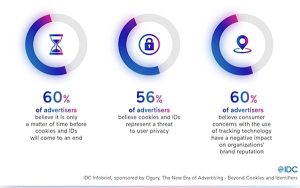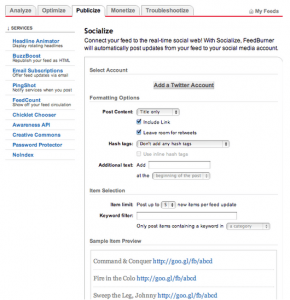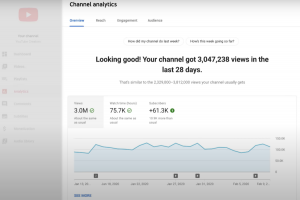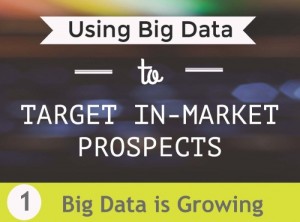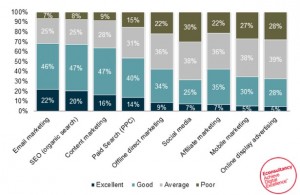
Courtesy Salesforce Canada
Social media marketing requires a sustained effort to reach your target marketing using their preferred channels while adapting content to fit the rules, norms, and optimization strategies that work in each platform. Adding a new social network to the mix relies on having sufficient bandwidth and knowledge to add the new channel along with the potential to reach goals represented by the platform. With the rise of Instagram as a platform of choice by broader sets of users, Instagram marketing is something to think about as an addition to your overall social media strategy.
Should you add Instagram marketing?
Let me say this upfront. I’m not an Instagram expert and, I’m really just learning how to optimize my Instagram strategy.
As with any other marketing strategy, you must match your strategy, including the channels used to reach consumers, based on your target market. Since my target market often includes small and mid-sized businesses (SMEs), Instagram was never a major part of my strategy to reach these folks.
Instagram marketing is commonly used by consumer-facing brands, especially those in CPG (consumer packaged goods). Hence, my Instagram account wasn’t particularly exciting or innovative. I recognize my clients and readers do use Instagram frequently and, with the spread of Instagram to larger and more diverse groups, I decided it was time to write about how you can improve your Instagram to improve marketing performance.
First a few statistics regarding the use of Instagram [source]:
- At least 1 billion users are active on Instagram
- About half of these users access Instagram every day
- Instagram skews slightly female, with 56.3%
- 37% of US adults use Instagram
- Instagram users are mostly young (72% of teens use the platform)
- 63% of Americans use Instagram every day (hence, more older Americans join all the time. We’ll likely see the same transition we saw with Facebook, Instagram’s parent company, where teens led usage, quickly followed by their parents and grandparents. Today, Facebook’s highest growth is among users 65+)
Benefits of Instagram to businesses
Ninety percent of the world’s top brands use Instagram marketing. All these brands could be wrong, but that’s a stretch. Instead, let’s think about why these top brands use Instagram.
A major goal for any brand is to increase sales and studies show about a third of Instagram users purchased a product through the app. Building toward sales, businesses know certain consumer behaviors are important, such as visits to websites and stores. Up to 75% of Instagram users clicked on links in the ad that may later generate sales.
Advanced targeting on Instagram allows firms to laser-focus their advertising on users most likely to buy, which reduces the overall advertising expense as a percentage of sales. Retargeting to users who already clicked further increases the yield of your advertising (see image below).
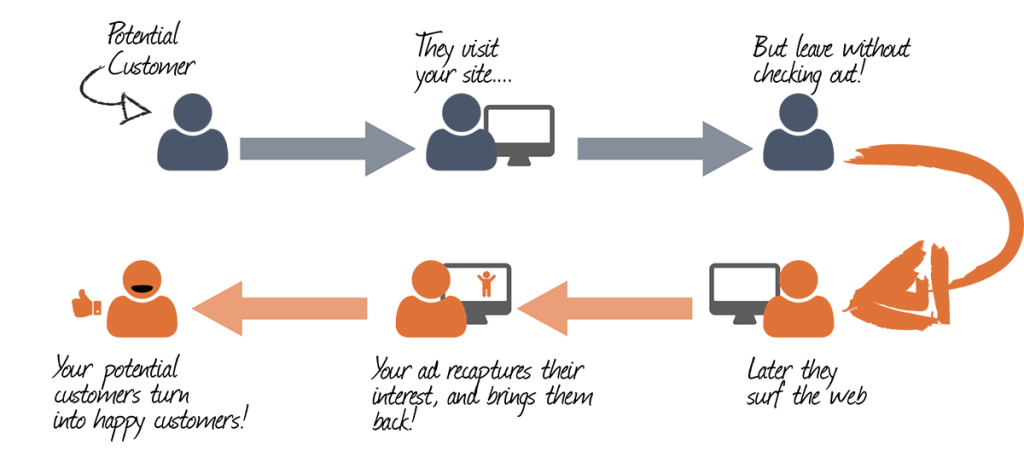 Image courtesy of Lyfe
Image courtesy of Lyfe
Another benefit of using Instagram is the resulting metrics, which provide insights needed to optimize your strategy.
Instagram helps build better relationships with your target audience. Maybe it’s the visual basis of Instagram, maybe the stories feature, or maybe just the way businesses use Instagram, but the platform encourages users to join a brand by being more than a follower, with more than 3.5 billion likes generated on posts per day [source]. These relationships yield UGC (user-generated content) that resonates with users particularly well and builds even more diverse relationships.
Strategies for success in Instagram marketing
Hopefully, I convinced you of the benefits associated with Instagram. Now, let’s get down into the weeds of how to do Instagram marketing well.
As with all other types of social media marketing, users want authenticity and don’t want you to promote to them constantly. Use posts as a way to connect with your target audience, offering humorous, valuable, entertaining, and informational content. Show a little of yourself by letting users in on the backstory or backstage aspects of your business and don’t forget to celebrate your users as a way to connect and build your audience.
1. Create an Instagram business account
You need an Instagram business account to effectively brand your business on the platform, as well as to enable ads. Since Instagram is really a mobile app (yes, they have a desktop version but most of the action occurs over the mobile app), so you need to download and access Instagram through your smartphone or tablet. As part of your profile, use your business name (if possible, another reason to get into Instagram as early as possible and consider name availability if you’re just setting up a new business) and add a picture to brand your account to appeal to your target market. While you must conform to the dimensions established by Instagram, the image itself should match others used across social platforms, your website, and in the store, if you have a brick and mortar, to ensure each consumer exposure reinforces prior exposures.
You also want a bio that clearly states who you are and why users should care. Be sure to add a link to your website and any other platforms you have to cross-pollenate between them.
Follow industry leaders to keep current on effective marketing strategies.
2. Types of posts on Instagram
Image posts are the most common type of post.
Instagram requires square images, so keep that in mind as you edit your images. You should include some catchy text, and choose hashtags that appeal to your target audience. Users search based on these hashtags so you want your content to appear by including the hashtags that are popular and relevant. Adding hashtags in the comments section ensures your text section is cleaner and more inviting.
Instagram contests are a great tool for driving specific action, as well as encouraging UGC.
Here are some examples of content you should post on Instagram:
- How you make the sausage — in other words, what goes on behind the scenes at your workplace
- Reposting content from employees, suppliers, individual managers, or other stakeholders, including customers
- Educational posts
- Influencer posts, or even micro-celebrity posts of them using or talking about your brand
- Motivational posts
- UGC, which is often the most powerful type of post
- Newsjacking, which capitalizes on an event, news item, or holiday to create a post
- Videos, edited with 3rd party software. The autoplay for video is set to mute, so give users a few seconds to unmute before you share needed sound
- Boomerangs, which are short video loops created using the in-app camera and stringing images together
- Stories that disappear after 24 hours, which allows for more frequent posts without pissing-off your followers. Stories feature less polished images, sometimes set to music, with very short texts
- Instagram live, much like Facebook live
Also, don’t forget about the natural link between Facebook and Instagram to “double-dip” on your marketing efforts by sharing (and advertising) across platforms.
3. Capturing and editing images
No one expects Instagram images to look like those in a magazine. In fact, the appeal of Instagram images is their informality. But, that doesn’t mean you can throw up any old image and think hope to attract a lot of likes or build your audience.
Using a smartphone to capture images works. Think about the following in capturing great images with a phone:
- composition – the rule of 3rd makes images more appealing. So, rather than focus your subject in the center, offset the image into the first or last third of the frame.
- lighting is important. You can construct a circle light, which makes your subject look great, for a few dollars or buy one. They even have circle lights designed to integrate with your mobile. Natural light also works well
- focus on an image rather than a busy background
- use negative space to draw attention to your image
- Use Instagram’s editing tools and filters or 3rd party editing tools
4. Optimizing results
- Choose posting times to get the most engagement. Here’s a graphic to help.
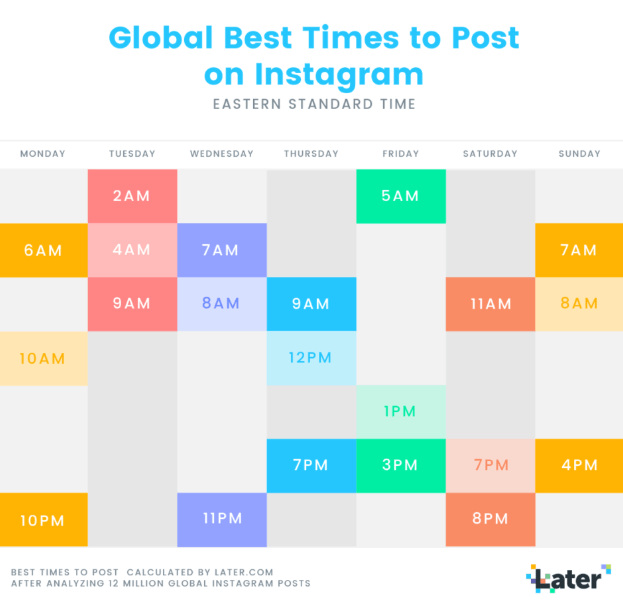
Image courtesy of Social Buddy
- Captions only show 3-4 lines to users, with a more option. So, even though you can use up to 2200 characters for your caption, ensure the first few lines appeal to your target audience.
- Add location to your posts and always include a call to action to drive behaviors, even if that’s only asking for users to like, comment, share your post.
- Use hashtags that fit your content, especially those for popular hashtags. Instagram makes this easier by using autocomplete to suggest appropriate hashtags. Include 2-3 hashtags per post.
- Once you post, ask your network to “like” the post or to double-tap the image to register a like. The Instagram algorithm shows posts with more likes higher in the feed.
- Also, commenting on the post from other, related users, helps build your own Instagram network.
- Build collections by saving photos for later reference. Maybe you see something a competitor or user did and you want to emulate their post. Save it for later.
- Of course, the best tool to optimize Instagram is the same as with any marketing strategy. Monitor your metrics to gain insights necessary to tweak your strategy until you’ve optimized your return.
Conclusion
I hope you found this post valuable and now have some tools to get you started with Instagram marketing. If you have anything to add to this post, I’d love to hear your thoughts or tricks you learned to build an effective Instagram marketing strategy. Simply enter your tips in the comments. I look forward to hearing from you.
Digital & Social Articles on Business 2 Community
(21)
Report Post
